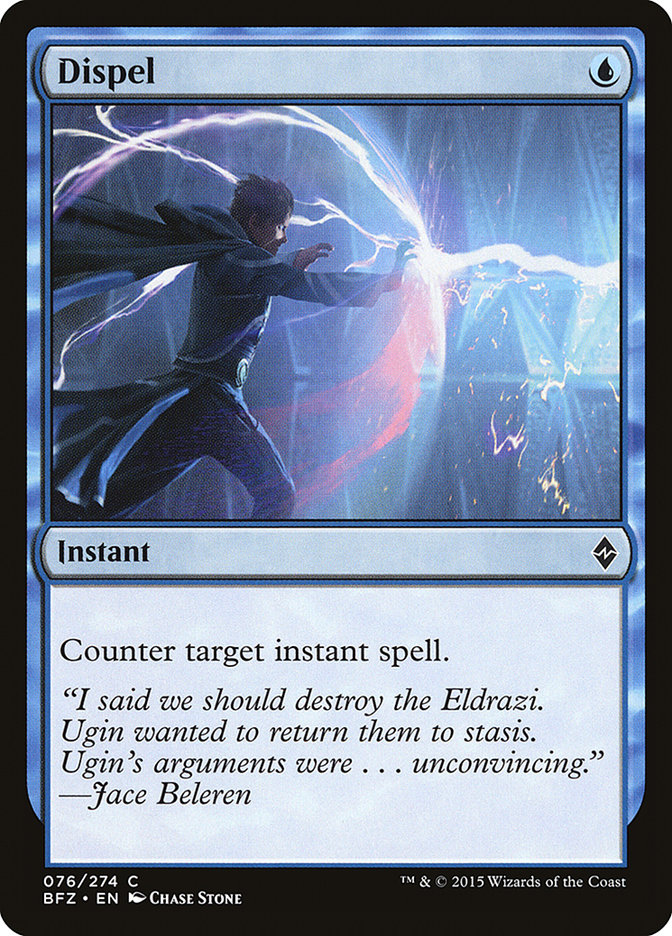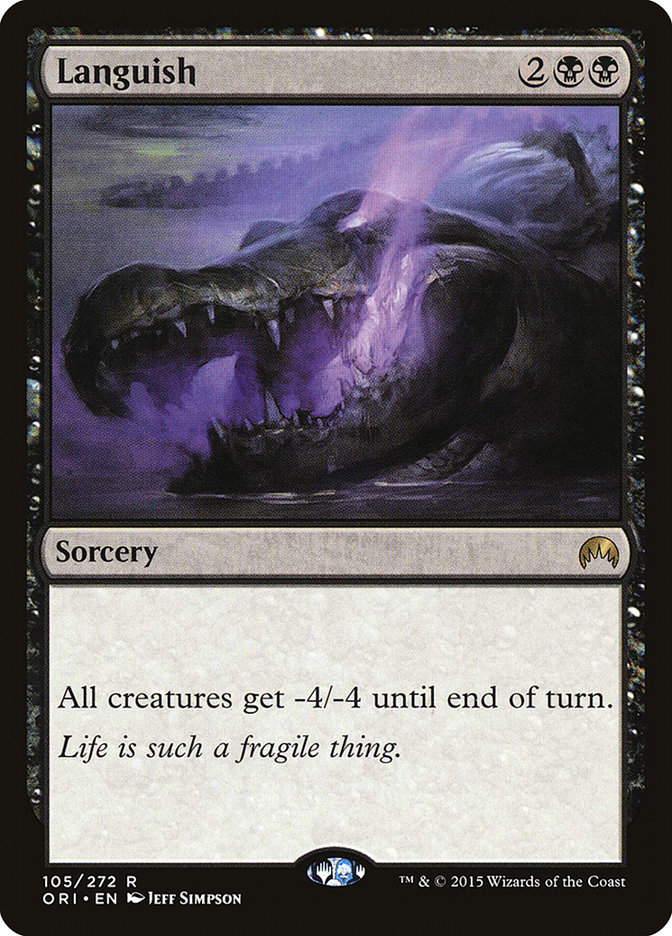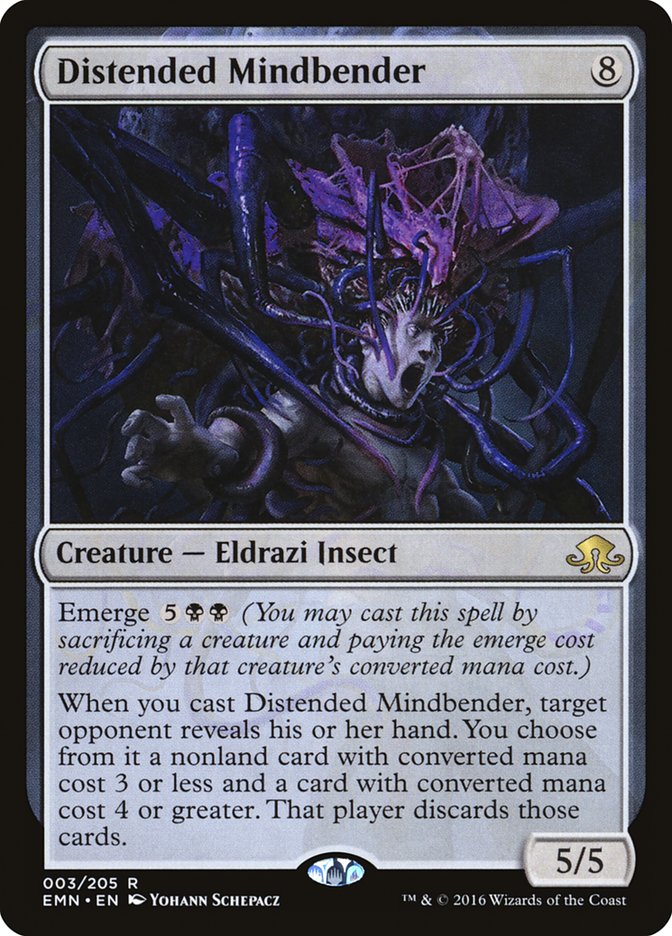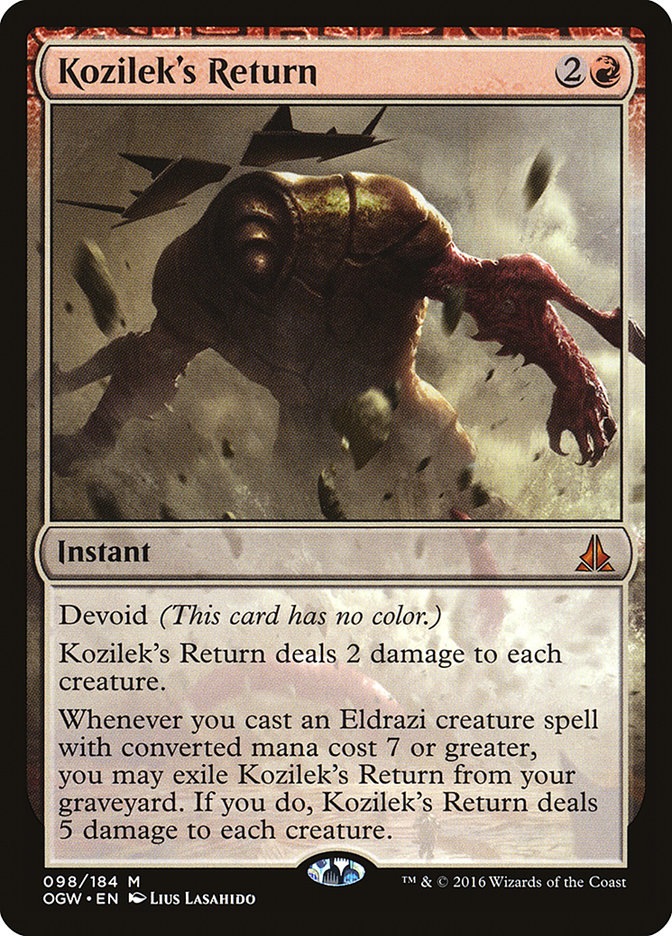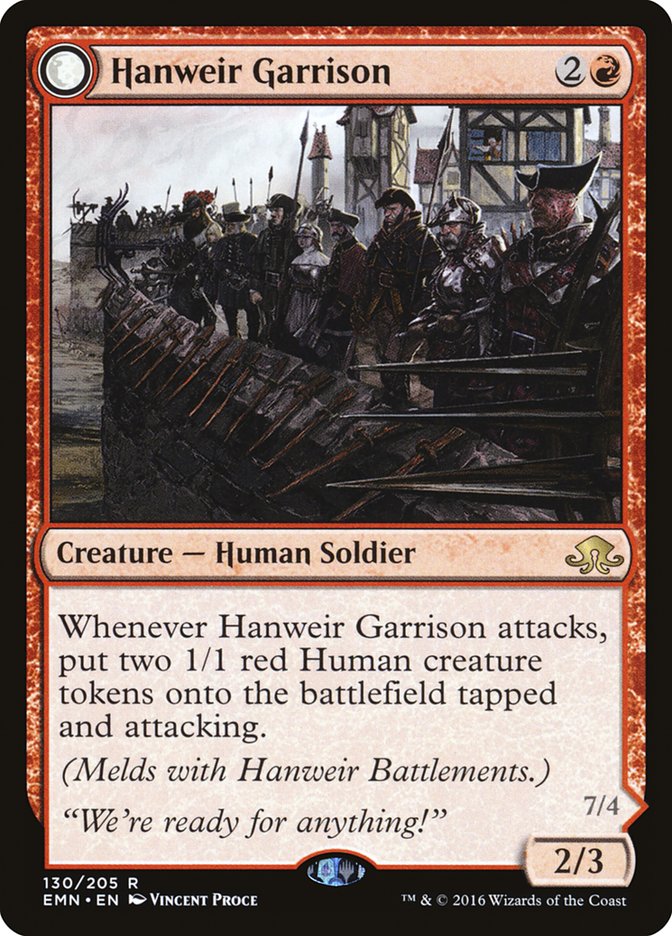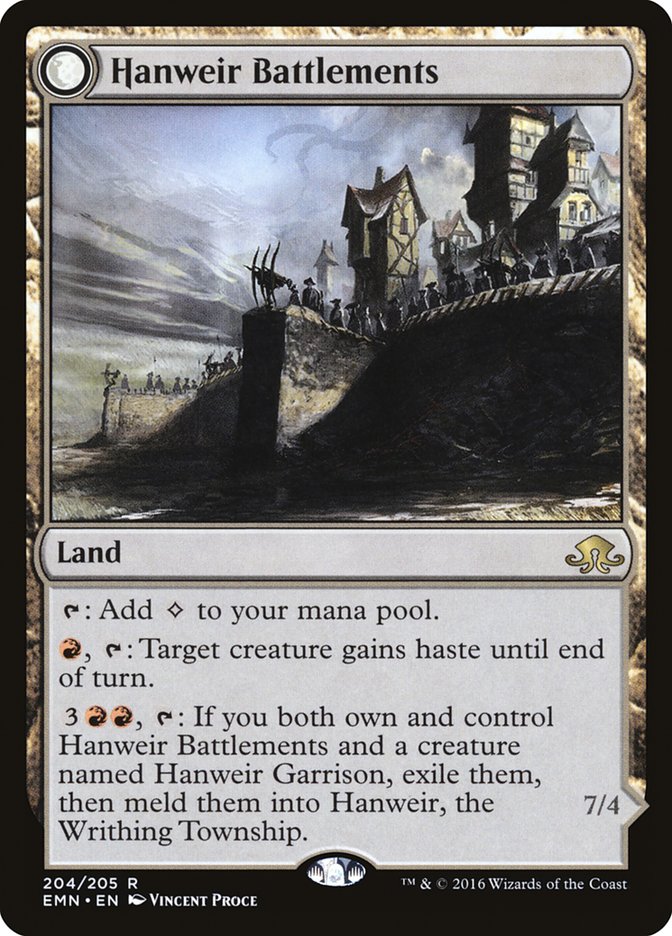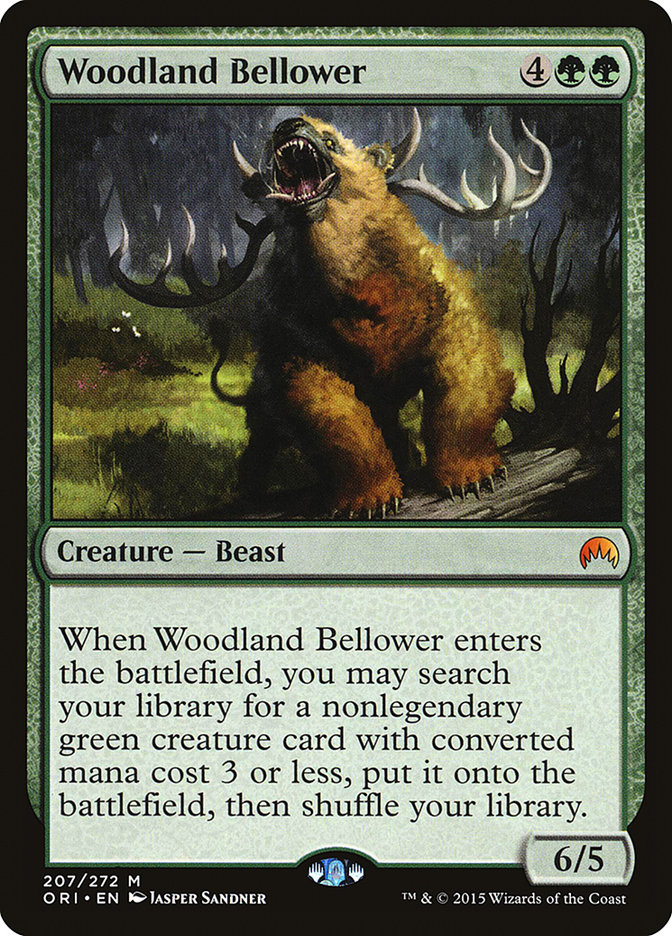You know, it’s kinda funny.
Here we are, sitting in exactly the same place we were just a few months ago with the release of Shadows over Innistrad. Bant Company had just won the first Standard tournament and ultimately flooded the Invitational field the very next weekend. Everything was chaos. Everyone was screaming for change, me included.
And then came the Pro Tour. Many of the game’s top minds came together to battle for the title of Pro Tour Champion. We saw eight different archetypes in the Top 8, all filling us with hope that the format could be diverse. And in the following weeks, new top decks emerged, and we were once again wondering where everything went wrong.
With the Pro Tour beginning this very evening, thanks to Australia being on the other side of the world, we’re all once again waiting for other people to show us that Standard isn’t so bad. Sure, the field will contain a lot of Bant Company, but I’d be willing to be a significant amount of money that at least one super team at #PTEMN is going to break it wide open.
Creatures (27)
- 4 Reflector Mage
- 2 Eldrazi Displacer
- 4 Sylvan Advocate
- 2 Archangel Avacyn
- 3 Tireless Tracker
- 3 Duskwatch Recruiter
- 2 Thalia, Heretic Cathar
- 4 Spell Queller
- 3 Selfless Spirit
Lands (25)
Spells (8)

You don’t need a lot to pick apart a deck based around a ton of creatures. In fact, there are plenty of cards in Standard that are generically good against the Bant Company deck. The problem is that you’re trying to answer a question, while Bant Company gets to ask the question.
Can you beat Bant Company? Probably, but not all the time. The deck is too consistent and plays too many generically-good-cards. You can bring in Dispel to fight Collected Company and Dromoka’s Command, but you might be stuck with that Dispel rotting in your hand while they draw a bunch of cards and beat you down with Tireless Tracker.
And so the saying goes: “There are no wrong threats, only wrong answers.” That’s one of the reasons why I try to stay far away from control decks at the beginning of a new format. If you don’t know what you’re going to run up against, it can be difficult to build your removal package in such a way that it can handle what the opponent is going to throw at you. Most removal is situational (or costly, if not), so you’re generally going to be in a good spot in the early weeks of a format if you’re the one playing the creatures and not the removal spells.
But we’ve known about Bant Company for some time. It was the bogeyman at the beginning of last season, and that trend has continued through this past weekend’s Baltimore Open, with a staggering 53 copies, 42% of the field, on Day 2. That’s higher than Jace, the Mind Sculptor in Standard. So what do we do?
The short answer is nothing.
We can wait until tonight (and tomorrow morning) to see what happens at the Pro Tour. Once that happens, we’ll have a lot more info to work with and be able to see their ideas in action. My guess is that multiple teams found a few decks that can (and will) go way over the top of Bant Company but might have trouble against W/R Humans. The tough part is making sure your deck is proactive enough to beat anything. After all, you don’t want to be sitting on your hands while your opponent is jamming Gideon, Ally of Zendikar.
Like we saw last Pro Tour, I expect Kozilek’s Return (on the graveyard side) and Languish being a big part of midrange decks overcoming Bant Company. Both of those cards are also great against W/R Humans but lackluster against G/W Tokens. After everything plays out, I wouldn’t be surprised if G/W Tokens ends up being the king of the castle yet again, and especially so with Osyp Lebedowicz taking down Baltimore in a field swarming with the consensus best deck.
What I’d Like to See
I want to see this combo dominate Bant Company. With any deck containing big sweeper effects, Collected Company being an instant-speed way to provide the Bant Company player with more threats is annoying. Distended Mindbender allows you to force them into casting Collected Company, or else they’ll lose it. On top of that, you’ll usually get another card out of them.
The fact that you can stack both abilities how you want (Kozilek’s Return resolving after Distended Mindbender’s trigger), since Distended Mindbender’s trigger happens upon casting it, means that you’re putting them in a virtual headlock. Getting to that point in the game is the tricky part. Reflector Mage does a great job of slowing down any deck trying to deploy an emerge creature.
Additionally, if you play black and red together, you get to play a few other goodies that are pretty sweet against Bant Company. I’m thinking Kalitas, Traitor of Ghet. I’m thinking Goblin Dark-Dwellers (who wants to Reflector Mage that thing?). Not to mention you can play a healthy amount of removal to give you enough time to hit Distended Mindbender. The thing you have to remember is that you don’t actually have to use emerge. You can just hit it the old-fashioned way. But if you’re playing Distended Mindbender and Kozilek’s Return, it would help if you had a few other roadblocks in the way, and maybe one or two creatures to throw under the bus.
Since Distended Mindbender costs seven to emerge, the best natural curve is a three-mana creature into casting Distended Mindbender on the fourth turn. But that isn’t necessary for the card to be good. In fact, you probably want to do a little setting up first with Kozilek’s Return, either casting it or discarding it to something like Tormenting Voice. I’m not exactly sure if I recommend Tormenting Voice at the moment, since it is pretty bad against Spell Queller, but I’m also not sure there are enough creatures for the front half of Kozilek’s Return to kill.
It’s a tricky, delicate combination to build around, which is exactly why I’m going to wait for the Pro Tour.
Hanweir Garrison is a great Magic card. It acts much like a Goblin Rabblemaster but doesn’t quite close the game as quickly as Goblin Rabblemaster did on its own. But it is a three-drop creature that incentivizes you to play a healthy amount of removal spells, which is exactly the combination of things you need to beat Bant Company.
In a vacuum, Hanweir Garrison is great. Three toughness matches up nicely against many of the creatures in the format, which means you usually get to freeroll some damage or create a token or two when attacking (even if you don’t clear the way entirely). The triggered ability from attacking also allows you to progress your position without overextending. If you’re playing against a control deck, adding a second threat to the battlefield is not always wise. Languish is going to see a lot of play, so aggressive decks should look closely at cards like Hanweir Garrison. Standalone threats are hugely important for making sure you can survive if a game ends up going longer than you want or expect.
But I think most people knew that Hanweir Garrison was pretty good already. But did you know that Hanweir Battlements is also kind of busted? Obviously, the cost is fairly steep to activate in a deck that’s low to the ground. And if you’re trying to curve out on schedule, you may not ever activate it a single time. But if your color restrictions are low and you want your lands to have a little bit of a kick to them, Hanweir Battlements is quite nice.
After playing with the card for just a few matches, I noticed that many of the games I was winning involved playing a Thunderbreak Regent on the sixth or seventh turn. Giving it haste was awesome! But if you have cheaper creatures in your deck, it lets you sneak in a bit of damage even after your opponent has killed a few of your early threats. And, you know, Meld is actually kind of sweet.
Here is my first go at the deck, with a pretty sweet sideboard plan to boot.
Creatures (22)
- 3 Zurgo Bellstriker
- 3 Goblin Glory Chaser
- 4 Abbot of Keral Keep
- 4 Reckless Bushwhacker
- 4 Falkenrath Gorger
- 4 Hanweir Garrison
Lands (22)
Spells (16)

This is a much more aggressive version, but the sideboard brought a little spice to the table. Against decks where your small creatures got outclassed too quickly, you have the ability to sideboard into a “Big Red”-style deck. I could see playing another land somewhere in the 75, as 23 total doesn’t feel like enough to support Goblin Dark-Dwellers.
Against many of the decks attacking Bant Company, it is better to start small and get bigger after sideboard. Going small allows you to steal Game 1 with very little effort. Plowing blockers out of the way allows some of your snowball creatures to finish the job quickly. We aren’t Atarka Red. We’re more like Sligh. We use our removal to clear the way for one or two threats, and hopefully it’s enough to get the job done. If not, maybe we can find some burn spells later in the game to finish the job.
We also have some explosive elements in the maindeck, like Reckless Bushwhacker. While this card isn’t particularly great against Bant Company or other creature-based decks, it allows for some combo-style kills out of nowhere. At the moment, this creature feels the most out-of-place in the deck, but I’ve been relatively happy with it. It helps eliminate some of the pressure that Reflector Mage can put on you and helps pump some of your creatures to actually trade with their horde of 2/3s.
Now, a bigger version from the start that might end up being a better choice, depending on how the metagame shifts. Thunderbreak Regent and Draconic Roar are solid additions to the maindeck if Bant Company is still large and in charge, but how do you fill the gaps? Do we go much bigger with Bedlam Reveler and Goblin Dark-Dwellers in the maindeck? Or do we focus solely on Thunderbreak Regent and Hanweir Garrison? I haven’t tested it enough to know exactly what I want, but I have a list for Big Red that feels pretty good so far.
Creatures (19)
- 4 Thunderbreak Regent
- 4 Dragon Whisperer
- 4 Abbot of Keral Keep
- 3 Goblin Dark-Dwellers
- 4 Hanweir Garrison
Lands (24)
Spells (17)

This is the deck I’m excited about. This is the deck that makes me want to play Standard again. A little fine-tuning and it could be just the thing to punish Bant Company. The main issue is making sure you can actually beat other decks. Having too much removal or removal that doesn’t kill creatures with higher toughness can be problematic, but you can usually find uses. Stringing together two copies of Galvanic Bombardment to clear a five-toughness creature is fine if you are getting in damage with Hanweir Garrison.
Some of the cards may look a bit strange, like Dragon Whisperer, but cards that allow you to use excess mana to great effect have traditionally been awesome in Big Red. I don’t know if Dragon Whisperer is good enough, but I wanted another solid two-drop threat to cast on the play. And if you start to flood out, it can pack a big punch. I don’t expect to turn on formidable, but like meld, it is an added benefit to a card that is pretty good on its own.
The sideboard is a work in progress, and I could even potentially see splashing a second color, but I wanted the basics down first. I want to put Hanweir Garrison onto the battlefield and kill everything else. If our Hanweir Garrison hits the bin, we have a few other threats to deploy, but it is no secret that Goblin Rabblemaster was the heart and soul of many Mono-Red decks when it was in Standard. Games where you drew Goblin Rabblemaster were significantly easier than games where you didn’t. The same is true for Hanweir Garrison, though you don’t get the freeroll Goblin token.
What We Need to See
We need to see Bant Company get obliterated at this Pro Tour. No one has fun playing with or against the deck, and that’s pretty absurd considering it was almost half the field on Day 2 at
We need to see players actually battling with new cards from Eldritch Moon. At the moment, it seems like the decks that play very few cards from the new set are doing quite well. From G/W Tokens to W/R Humans to Bant Company, there are a scant few additions from Eldritch Moon, and that is a problem. I want to see more Brisela, Voice of Nightmares.
I want to see people going wild with Emrakul, the Promised End (it was promised, dammit!). I want to see Woodland Bellower and Eldritch Evolution!
But most of all, I want to see people actually trying.
The way we’re currently conditioned from tournament to tournament is to play the same old thing. If it isn’t broken, why fix it? The Pro Tour helps shake up some of that monotony every few months, giving us a fresh look at new archetypes or innovations on older ones. The new rotation schedule will alleviate some of that, since we’ll have a new-ish format every six months, but that doesn’t make it any less miserable that we have to spend the next two months dealing with Collected Company.
Good night, and good luck.


